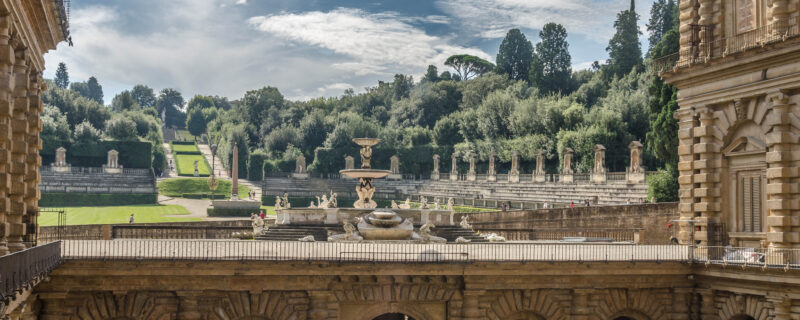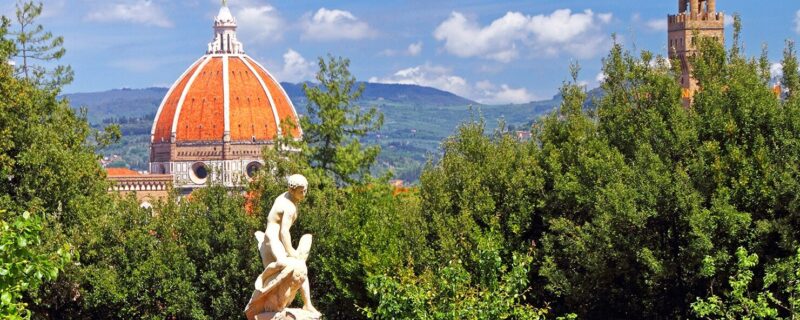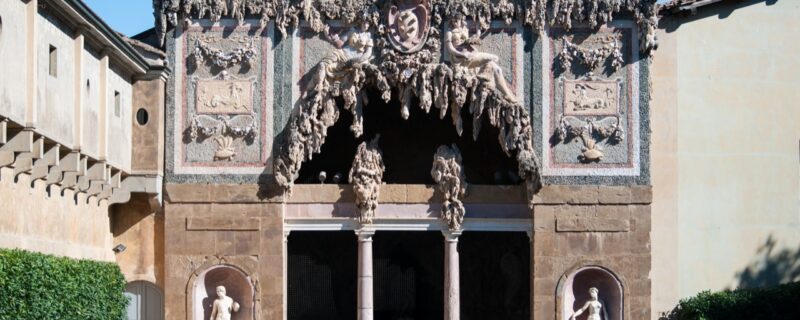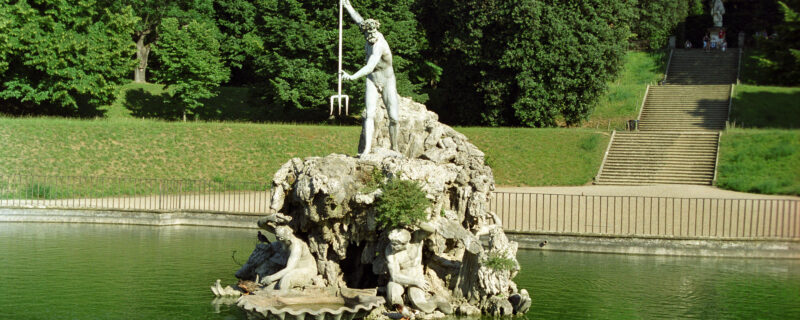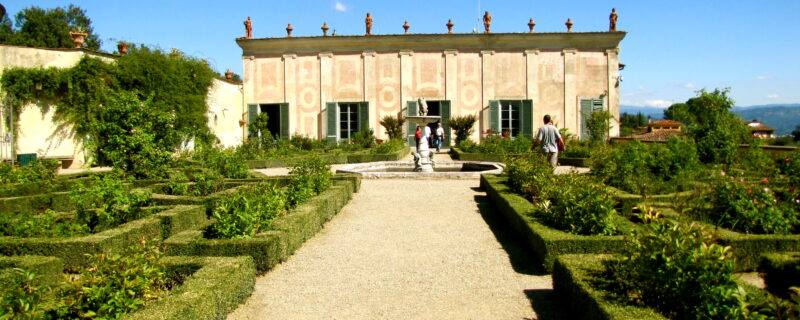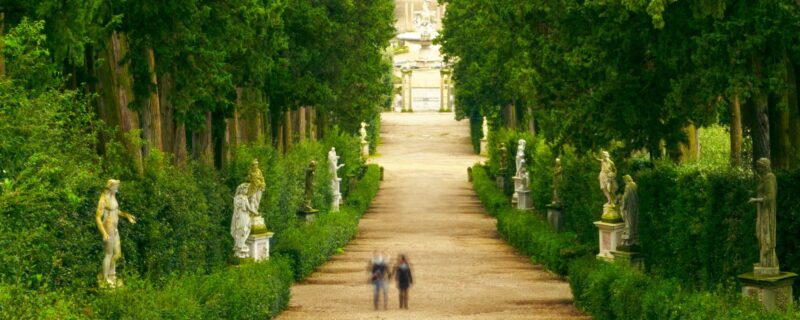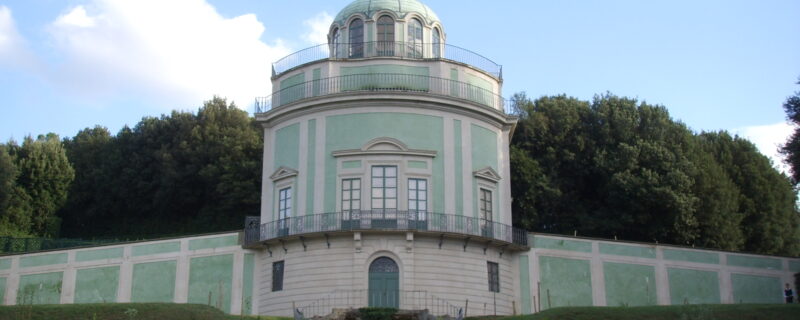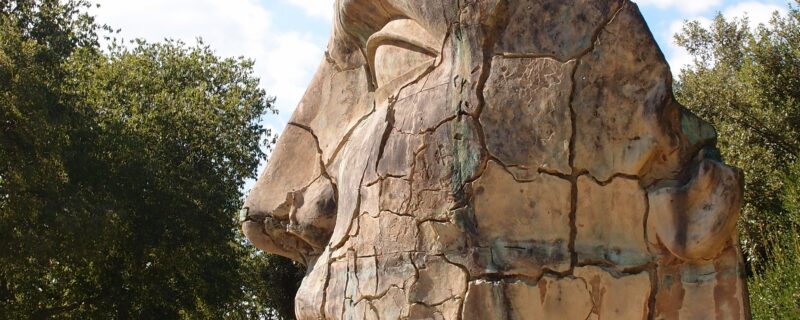Boboli Garden
Overview
An extraordinary garden, the whim and private park of the Medici family, filled with statues and fountains, climbs the Boboli hill behind Palazzo Pitti. Amidst artificial grottos and suggestive views of the city, we will discover the luxury of the Medici court, as well as the intrigue, loves and extravagant passions of the Grand Dukes!
Places
Piazza Pitti
Courtyard of Palazzo Pitti
Boboli Garden
Info
Tour duration: 2 hours
The tour is not available on the first and last Monday of every month, when the Garden is closed.
The opening hours of the garden change on the basis of the season. Contact us to find out the best time to visit it.
This tour involves visiting a garden on the side of a hill and featuring only gravel paths. We therefore recommend wearing comfortable shoes and adequate protection from the sun during hot periods of the year.
The tour is not suitable for all and is very difficult for visitors with reduced mobility.
Fees
Guided tour starting from
150,00 € max 3 hours
The fees do not include museum tickets, transportation costs or the rental of radio systems.
The use of radio systems is recommended for groups. We can manage the rental, on request.
Boboli Garden
Regular Tickets:
From March to October: 10,00 €
From November to February: 6,00 €
Reduced Tickets (UE Citizens between 18 and 25 years old):
2,00 €
Free Admission: Children under 18 years, Groups of UE students with reservation
Ticket Reservation Fee: 3,00 €; free for UE School Groups
By booking this tour we can follow you step by step, helping you to plan the visit of the garden. If you are going to visit the garden independently, we recommend reading our BLOG instead.
What to expect
This is one of largest and most celebrated gardens in Europe, the absolute model for so-called “Italian style gardens”, where Renaissance order and rationality are also reflected in the keeping of nature. Over the centuries, the garden has grown and transformed. Our tour offers the visitor the chance to travel back in time to understand the original functions and meaning of the garden, as well as its transformations over the years. We will start with the Mannerist courtyard by Ammannati, opening onto the main access to the garden. Following a short but steep climb, we will find ourselves between the Carciofo fountain and the amphitheater, created by exploiting the levelling of the hill caused by hundreds of years of extractions of pietraforte, used to pave the city centre and even to build Palazzo Pitti itself. Once upon a time, grandiose theatrical shows took place here to celebrate important family events such as weddings or coronations. We will then continue to climb until we reach the Fountain of Neptune, or “of the Pitchfork”, as it is called by the Florentines. Our tour will then lead us to the Abundance, a colossal statue started by Giambologna as memorial for Joanna of Austria, the first wife of Francis I, and this work will offer the chance to narrate intriguing stories of the Medici court. Once we reach the Garden of the Knight, located upon an ancient bastion, we will admire the countryside surrounding the city and also understand the strategic-military value of the garden. We will then start our descent along the winding paths next to the walls of Saint George Fort, last defence and bastion of the city. These will lead us to the Garden of Ganymede, once conceived as a fruit garden for the dames of the court. Here, during the XVIII century, the Lorena family built the Kaffehaus, where visitors could taste coffee and hot chocolates in the splendid scenario of the garden. The last stop on our tour is the marvellous grotto by Buontalenti, an artificial cave which once hosted the Slaves by Michelangelo, now in the Accademia Gallery and replaced by copies. The sculptures, paintings and sponge works on the walls were conceived to accompany the visitor on an initiatory journey culminating with the Venus by Giambologna, still today present in the innermost area of the grotto and hidden from the view of those who stop at the entrance. The last work we will see before exiting the garden is the curious statue of the Dwarf Morgante, irreverently bare naked on the back of a tortoise, the symbol of Cosimo I de Medici, the initiator of the Grand Duchy of Tuscany.
